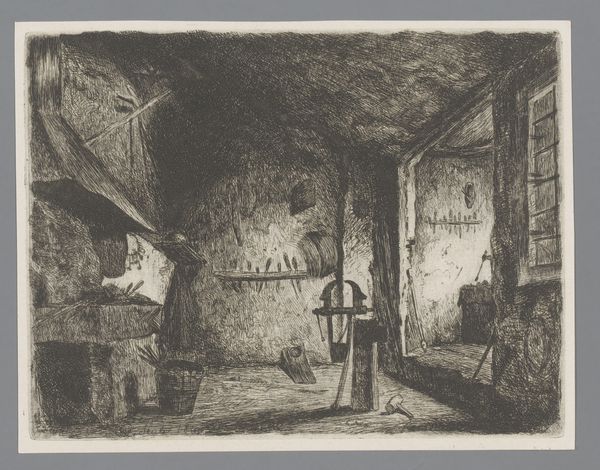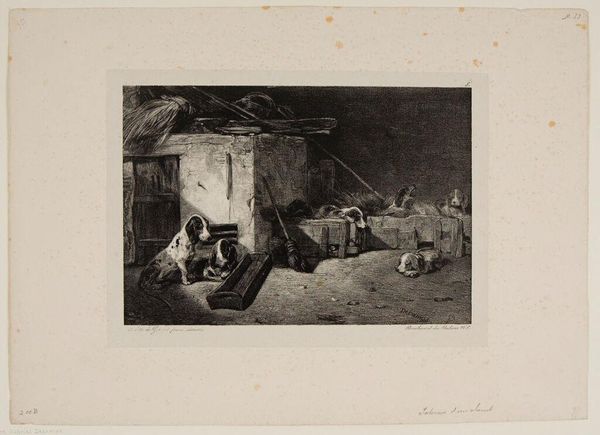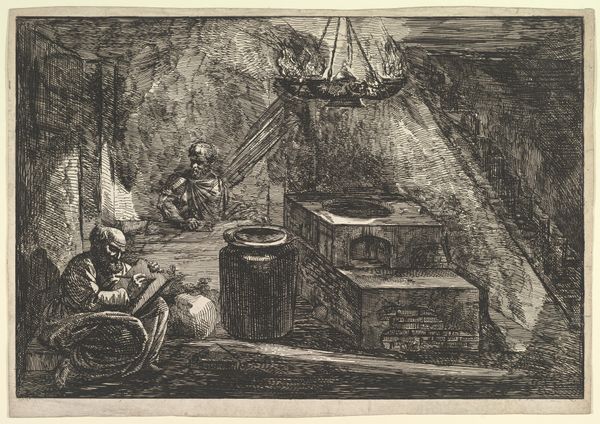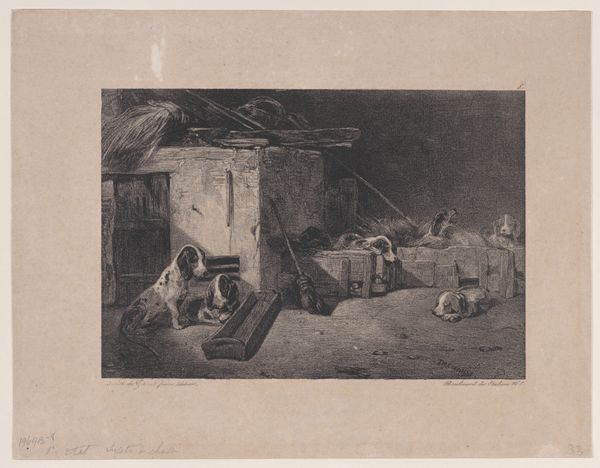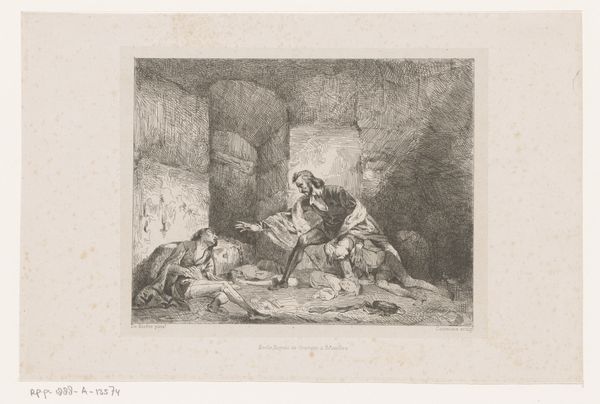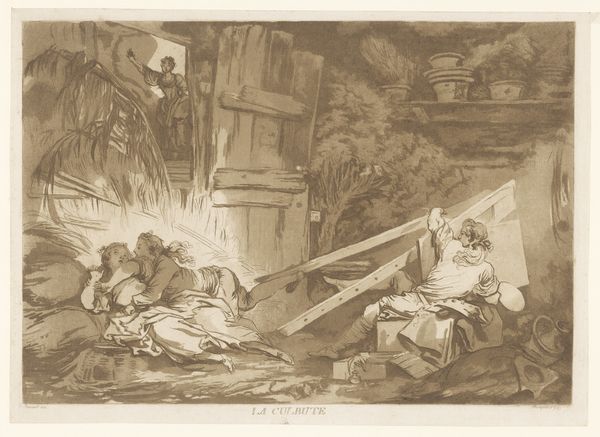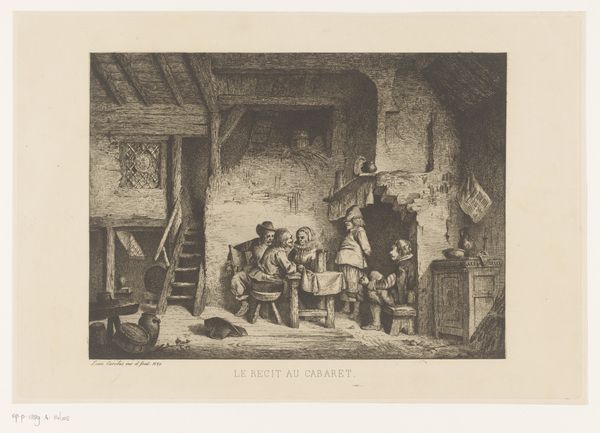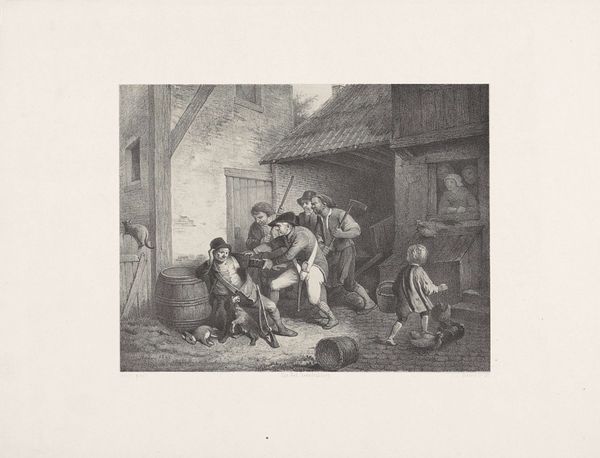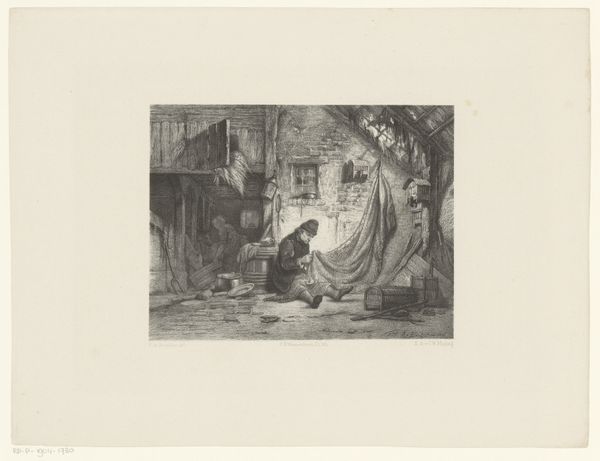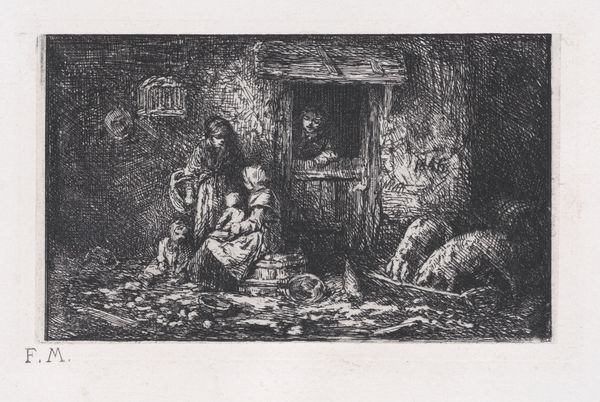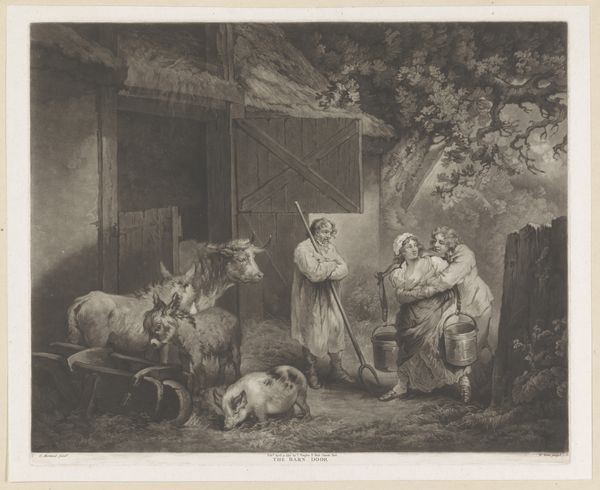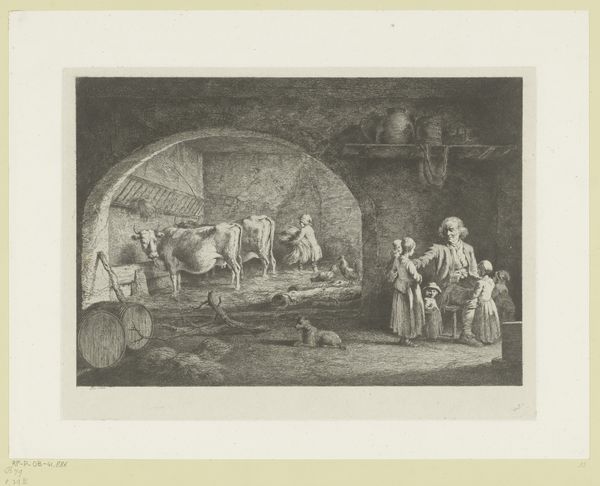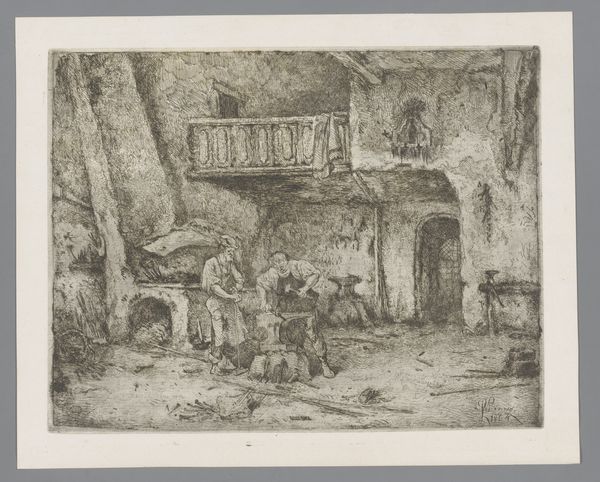
Dimensions: 163 × 257 mm (image); 199 × 287 mm (chine); 215 × 307 mm (plate); 260 × 354 mm (sheet)
Copyright: Public Domain
Curator: This is "Courtyard," an etching and intaglio print on paper crafted in 1845 by Charles Jacque, now part of the Art Institute of Chicago's collection. It offers a glimpse into everyday life in mid-19th-century France. Editor: Stark, wouldn't you say? The monochrome and crowded composition lend a somber air, almost suffocating, to what should be a cheerful outdoor space. Curator: Yes, but look closer. The artist is using shadow here. The heavy cross-hatching is significant—an etching technique deployed to create depth and to capture the weight of labor. The courtyard teems with symbols of rural existence, poverty and toil, all intertwined with a narrative that isn't immediately clear. Editor: Narrative isn't clear? You see children at play—a scene almost jarringly juxtaposed with the man’s labor, the rough-hewn walls, and the evident disrepair of the courtyard. The whole print screams socio-economic commentary, about marginalized people trapped in inescapable social structures. It evokes that mid 19th century genre painting focus on everyday, almost "hidden" aspects of life. Curator: True, but I also see enduring archetypes. Consider the ladder leaning against the wall, almost biblical in its reference. It invites reflection on the journey through life's hardships. And the placement of the children near the doorway—is that portal leading toward salvation or deeper entrapment? Remember that during the 1840s, French society was undergoing considerable upheaval, marked by poverty, inequality, and revolt. The "genre" scene functions more as a comment of societal decay rather than the glory of everydayness. Editor: Interesting that you pull in archetypes. Given the Realist and Baroque echoes I'd expect from the time, I interpreted that ladder literally – just an abandoned, broken down wooden item in a messy courtyard filled with other junk and children... nothing transcendent. Even the children, they look more confined, entrapped, and almost dirty. Curator: I hear that—but think how visual and tactile this image is and how this connects us to these lives even in our current time. Whether one sees immediate hopelessness or enduring symbols of hope, Jacque provides a vivid invitation into our shared humanity. Editor: Indeed. This courtyard scene compels us to acknowledge the harsh realities embedded within the everyday lives of past societies, and perhaps to think how little our structures and perceptions have really changed.
Comments
No comments
Be the first to comment and join the conversation on the ultimate creative platform.
